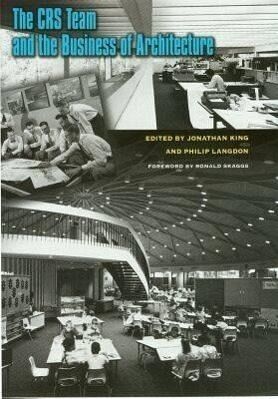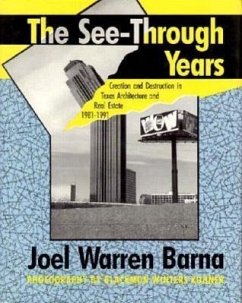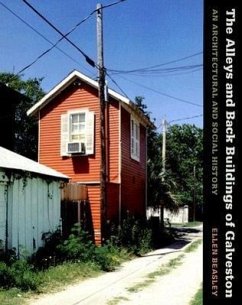
Crs and the Business of Architecture
Versandkostenfrei!
Versandfertig in über 4 Wochen
29,99 €
inkl. MwSt.

PAYBACK Punkte
15 °P sammeln!
Since the end of the Second World War, few firms have influenced the practice of architecture as much as Caudill Rowlett Scott, or CRS. From its establishment in the 1940s as a three-man operation above a grocery store in College Station, Texas, CRS evolved into a world leader in programming, construction management, school design, and other dimensions of modern architectural practice. By the 1970s, CRS was a master at organizing complicated architectural undertakings and had earned a global reputation for sharing its insights with practitioners worldwide. This book about CRS will fill an impo...
Since the end of the Second World War, few firms have influenced the practice of architecture as much as Caudill Rowlett Scott, or CRS. From its establishment in the 1940s as a three-man operation above a grocery store in College Station, Texas, CRS evolved into a world leader in programming, construction management, school design, and other dimensions of modern architectural practice. By the 1970s, CRS was a master at organizing complicated architectural undertakings and had earned a global reputation for sharing its insights with practitioners worldwide. This book about CRS will fill an important gap in architectural history. It explores the ways architects of the mid-twentieth century developed methods that allowed professionals to analyze projects systematically rather than relying on the traditional combination of information and intuition. Based on oral histories taken from many leaders and staff members of CRS, the book traces the company's development from its beginnings to its emergence as the largest architecture/engineering firm in the United States by the early 1980s and to its dismemberment in 1994. The main focus is on the period from the 1940s to CRS's merger with the South Carolina_based engineering firm Sirrine in 1983. Interspersed throughout the volume are pithy memos written by the firm's charismatic, intellectual leader, AIA Gold Medal winner Bill Caudill. The book is heavily illustrated with pictures of firm members at work and views of important CRS buildings such as the Jesse H. Jones Hall for the Performing Arts in Houston. The interviews that richly inform this book are set within a narrative that places the firm and its innovations in a broader perspective, connecting the CRS story to contemporary developments in architecture, the economy, and society.












